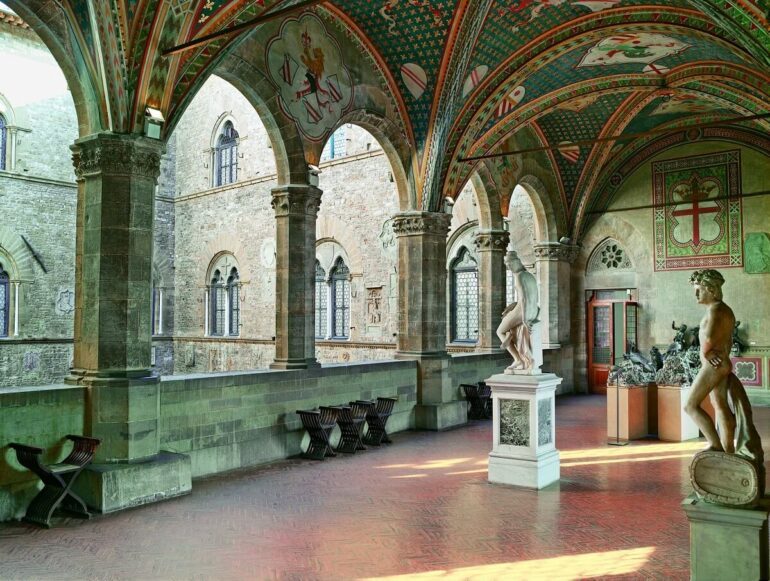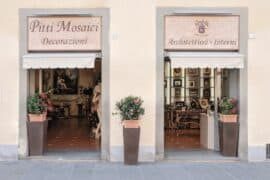An essential experience for history and art lovers, Museo Nazionale del Bargello holds many of the most significant sculptures and artifacts from the Renaissance and beyond
One of the oldest buildings in Florence, The National Museum of Bargello on Via del Proconsolo was originally constructed to be a fortress in the 13th century, later functioning as a police headquarters and prison. Beginning in the mid-19th century, the building became one of the first public museums in the city, renowned for an impressive collection of Renaissance sculptures by some of history’s most important artists – Michelangelo, Donatello, Robbia, Cellini. Today, the museum is a must-see for anyone who wishes to step into the heart of Florence’s celebrated art and history and be transported back in time to the Renaissance.
The Palazzo
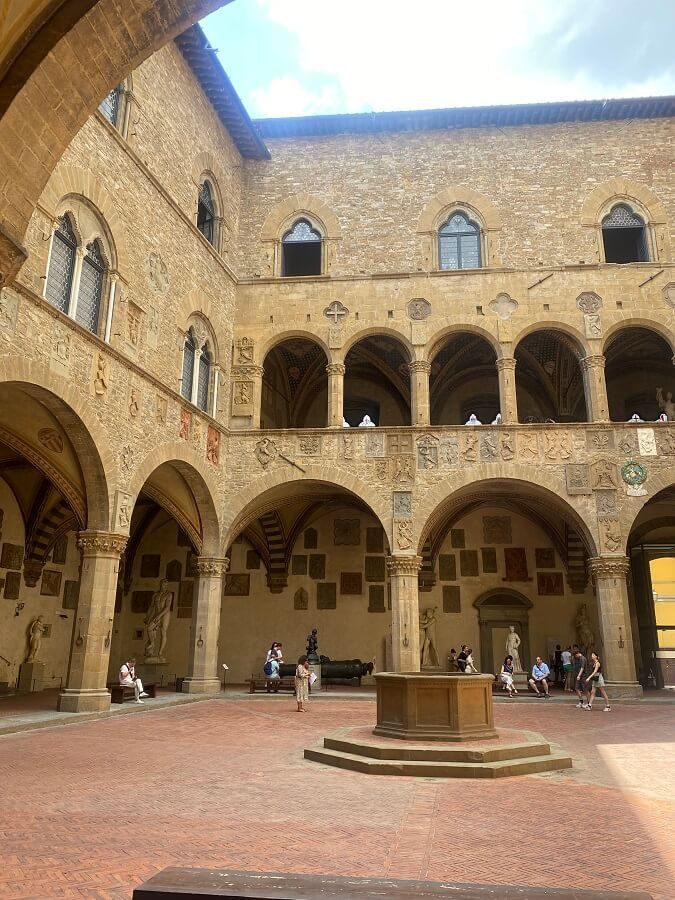
Upon entering the museum, one steps into the open courtyard, the first ever public palazzo in Florence designed by Lapo di Cambio. Enriched with an extensive history, the courtyard underwent several architectural and functional renovations until its ultimate transformation into a museum in the 19th century. A tranquil area that invites contemplation and curiosity, the courtyard houses several breathtaking sculptures, including Bartolomeo Ammannati’s impressive Fountain for the Sala Grandecommissioned by Cosimo I de’ Medici in the mid-16th century.
In addition to marveling at the awe-inspiring sculptures and soaking in the serenity of the palazzo, one can enjoy the historical coats of arms adorning the courtyard which were left by Capitani del Popolo, Podesta, and Giudici di Rota between the 14th and 16th centuries. The coats of arms stand as a testament to some of the most influential families and figures in Florentine history, intricately crafted with unique designs. In its entirety, the palazzo serves as an integral piece of the museum and a window into the often turbulent and fascinating past of the city.
The Michelangelo and 16th-Century Sculpture Room
After spending some time in the palazzo, one moves into The Michelangelo and 16th-Century Sculpture Room, which houses some of the most significant works of the Renaissance crafted by illustrious artists such as Michelangelo, Cellini, Ammannati, Giambologna and Bandinelli.
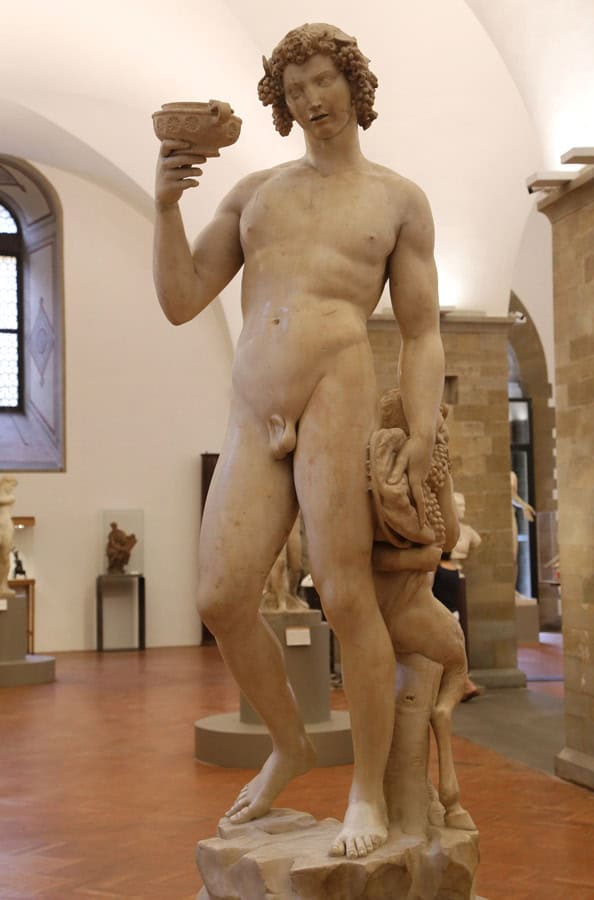
Four of Michelangelo’s sculptures are featured in the room. The Bacchus (1496/97), one of the artist’s first Roman works, stands at the heart of the space, immediately commanding attention. Originally commissioned for the cardinal Raffaello Sansori Riario, the statue depicts the Roman god of wine positioned confidently in front of a satyr eating grapes from his hand, but his drunken portrayal was ultimately dismissed by its original commissioner. Representing an early stage in Michelangelo’s artistic career, the statue is important in understanding his development and influence as one of the most renowned artists in history.
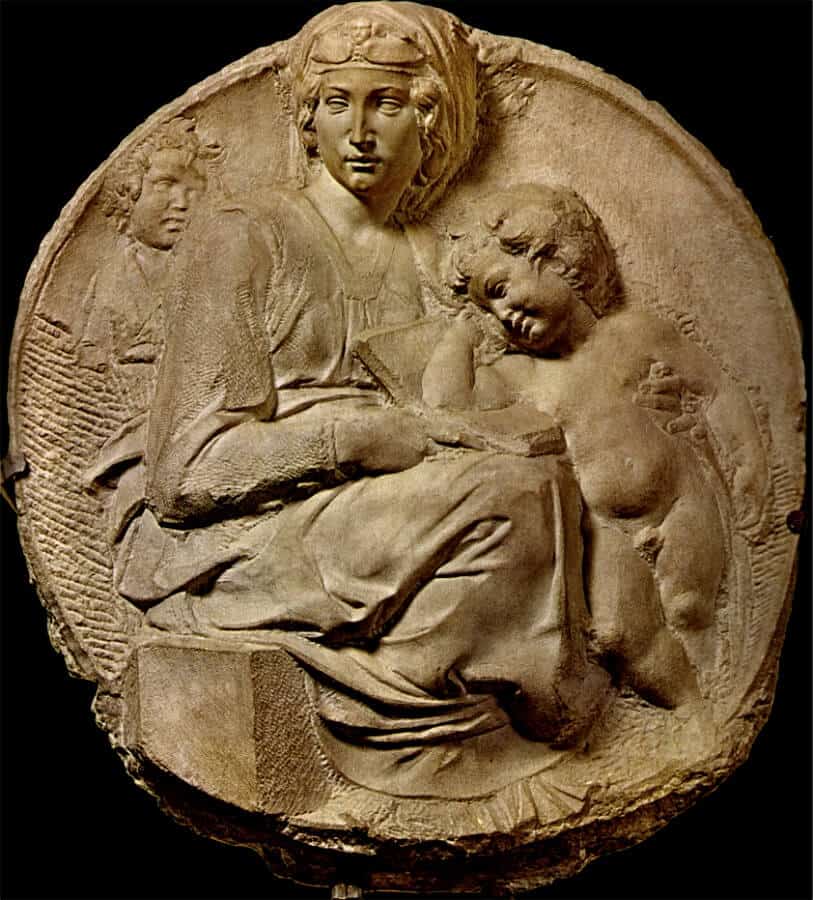
Standing in addition to The Bacchus are three other works attributed to Michelangelo: Brutus, Pitti Tondo, and David-Apollo, each with a unique style and subject. Following Michelangelo’s statues are works by other notable artists from this period, including the bronze Ganymede by Benvenuto Cellini as well as the original base of the Perseus, commissioned by Duke Cosimo I de’ Medici to symbolize his power, intricately carved in both marble and bronze with various symbols and mythological figures.
The First Floor
After ascending the first staircase of the museum, you will find yourself surrounded by sculptures from the Middle Ages, Renaissance, and Baroque periods, as well as historical items collected by the Medicis.
The Ivories Room displays at its center valuable ivory pieces dating from the Etruscan era (4th century BC – 4th century AD) to the 14th and 15th centuries. Intricate figurines, religious icons, diptychs, and ornaments fill the space, as well as an impressive ivory sculpture of the Madonna and Child.
Next to this is the Medieval Sculpture Room, with works from the late 13th to late 14th centuries. The viewer is transported back to the Middle Ages as they find themselves surrounded by notable works by Arnolfo di Cambio and Tino di Camaino; panels from the church of Orsanmichele by Giovanni di Balduccio; sculptures by Piero di Giovanni Tedesco.
Moving on, you will enter the room of Maiolica, which presents itself as an expansive showcase of Italian craftsmanship from the 14th to 20th centuries. The room is dedicated to the decorative ceramic characterized by a distinct glazing technique, with items used for everyday life and special occasions.
You will also encounter the Carrand Collection, which features paintings, sculptures, jewelry, metalwork, and other artistic works collected by Jean-Baptiste Pierre Antoine Carrand, offering a display of artistic expression that spans centuries and cultures.
INSPIRATION
The Best Museums In Florence
The Bargello Chapel
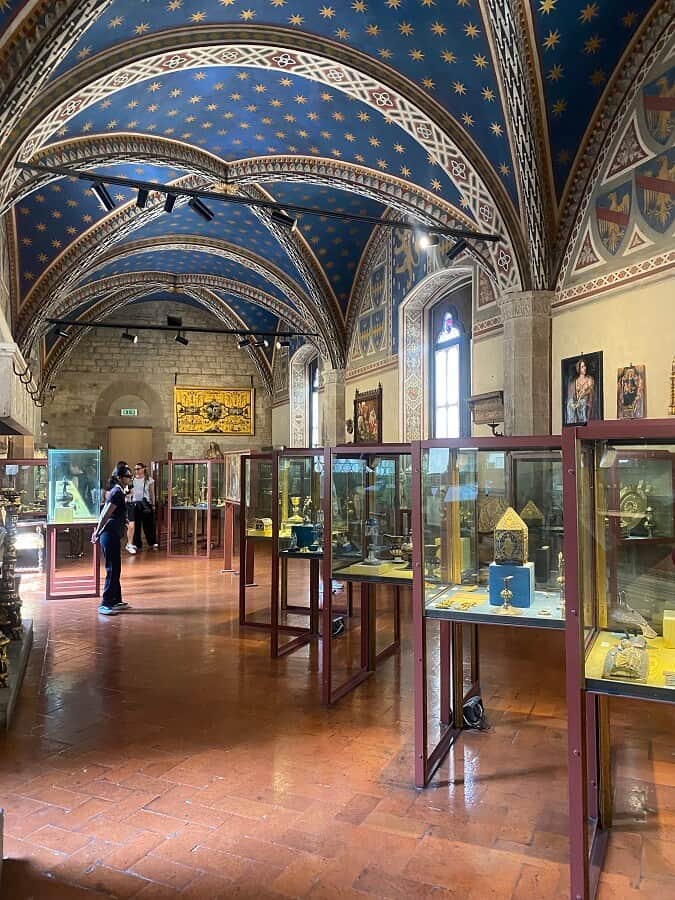
Built in the 14th century, the Bargello Chapel is famed for the discovery of several now-depleted frescoes by Giotto, including the oldest known portrait of Dante. The entrance to the chapel shows a depiction of Hell. On one wall are the stories of Mary Magdalene, and on the back wall is Christ the Judge and Paradise. The chapel now holds a collection of goldwork from various historical periods, many of which are religious objects used in Mass.
Hall of Donatello
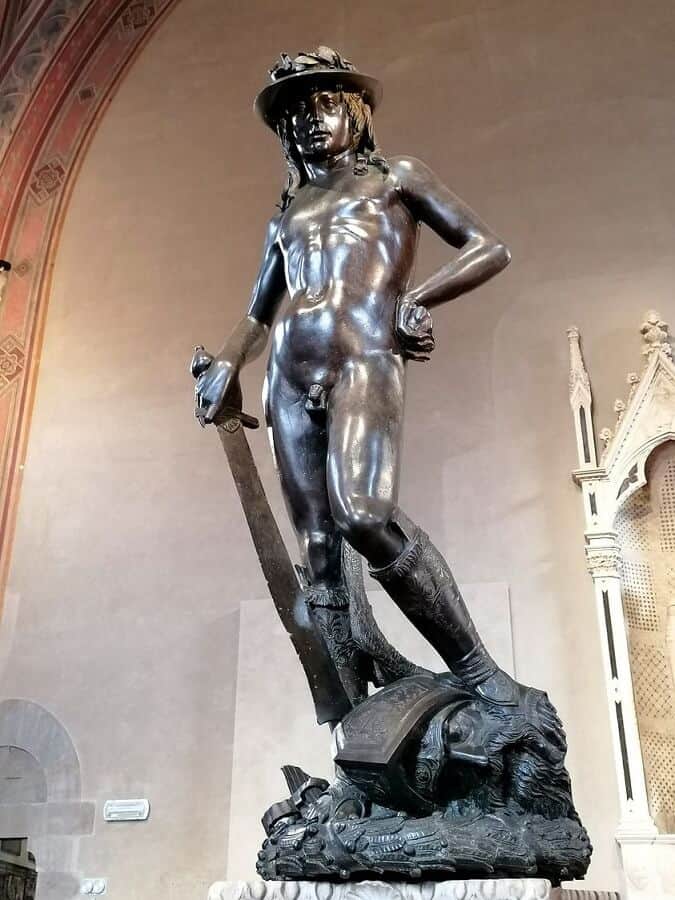
After passing by the Verone and the bronze Birds which face the courtyard of the palazzo, you will find yourself in the famed Sala di Donatello, a massive room where many of Donatello’s most important work is held, alongside that of other artists – such as Brunelleschi, Luca della Robbia, and Ghiberti. Here you will see Donatello’s bronze statue of David, as well as St. Georgeand Marzocco. Also featured in this room are the two panels submitted by Ghiberti and Brunelleschi for a competition involving the adornment of the Baptistry, titled The Sacrifice of Isaac. Sala di Donatello, perhaps the museum’s most impressive display, is required viewing during any visit to the Bargello and features an enormous collection of some of the most profoundly influential art borne of the Renaissance.
Sala del Verrocchio and Della Robbia
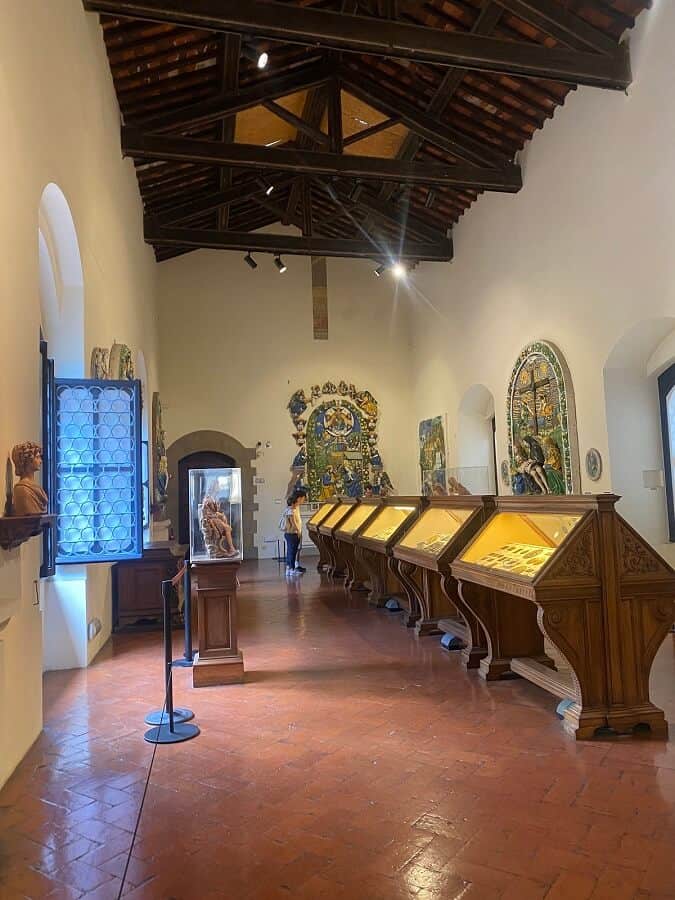
The second and final floor of the museum is home to stylistically distinct works by the Della Robbia sculptor family, including Andrea della Robbia and Giovanni della Robbia. Several glazed terracotta works fill the space with vibrant hues of blue, green, and yellow. In the center of the room behind glass cases are 15th and 16th century medals and plaques .
Also on this floor are works by Andrea del Verrocchio, Leonardo da Vinci’s teacher, including his Madonna and Childand Resurrection of Christ.
It would be impossible to completely cover the extensive collection featured in the Bargello Museum – it is rich with incredible history and art that makes it a must-see during any trip to Florence and for those that are curious about the Renaissance. In addition to its permanent collection, works by Ghiberti, Verrocchio, and Giambologna from Orsanmichele are currently on display until September 4. Additionally, special events are held at the museum periodically: on July 7 is The History of Tango at 8:00 pm featuring Marta Mazzini and Omar Cyrulnik and on September 23 the Ferdinando Roman Quartet will make an appearance at 8:00 pm. Stay up to date via the museum’s official website.
Museo Nazionale del Bargello
Via del Proconsolo, 4
Opening Times
From 8.15am to 1.50pm on Wednesday, and Thursday.
From 8.15am to 6.50pm on Friday, Saturday, and Monday.
Closed Tuesday
Tickets
11€, reduced 3€


